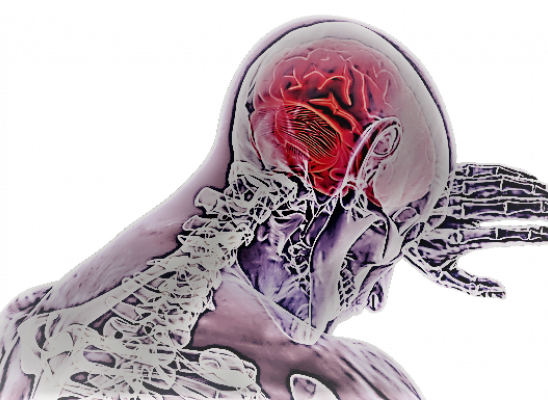Skin-Picking Trances: What They Are and What You Can Do About Them

Online test
Find out the severity of your symptoms with this free online test
In a recent webinar from Skinpick.com, Dr. Vladimir Miletic discussed the phenomenon known as skin picking “trances.” It’s a behavior that we know happens with people who pick because they talk about their experiences. However, there is surprisingly little information to be found in the literature. Much of what we know about trance picking comes from anecdotal evidence. So, just what do we know about trances? Turns out, quite a bit.
What Exactly Is A Skin Picking Trance?
Trance behavior is a prolonged episode of skin picking that is all-consuming. The person becomes singularly focused and completely absorbed in the experience of picking. They can become so engrossed in the picking that they may be completely unaware of what’s happening around them. They may not even realize that they are picking. As a result, the use of competing responses to stop the picking is rather ineffective because they’re not going to attend to it. The focus of the trance is solely on the picking.
What’s the Purpose of Trance Behavior?
Everything we do serves a purpose. So, what purpose does a trance serve? Dr. Miletic describes the trance as a radical example of experiential avoidance. It’s a way to avoid or alleviate those feelings and experiences that are distressing. As the distress builds, the need for emotional release and the urge to pick increases. When the person is engaged in picking, time seems to stop and all focus is on picking the skin. The person experiences relief from their distress without having to deal with the stressors directly. The result of the picking is short-term relief but it’s followed by feelings of guilt and shame. And the emotional distress starts to build again. As a result, Dr. Miletic points out, the picking episodes sort of perpetuating themselves.
How Do Trances Develop In the First Place?
Trance behavior develops in response to a need over time. When looking at how trance behavior develops, Dr. Miletic turns to George Kelly’s personal construct theory.
Dr. Kelly believed that every person is a scientist and is constantly gathering information and evaluating their world, acting in ways based on what they experience. In short, they learn to do what works for them. Behavior isn’t “good” or “bad”. It simply serves a purpose stemming from a person’s experiences and is either constrictive (avoidant) or dilating (engaging). The trance state is an extreme avoidance response. The trance essentially reduces the person’s world to skin picking and shuts out the distressing feelings and their associated issues. As a result, the person avoids the need to deal with all of the distress. It becomes the way the person deals with their distress.
If you’ve developed trance picking behavior, there are things you can do to change the behavior. Again turning to personal construct theory, just as behavior is learned through one’s interpretation and response to experiences, it can be changed via the same process.
Can You Stop A Trance Picking Episode?
Yes, you can. The key is to be prepared with strategies that work for you.
The first step in stopping your trace is understanding the way your trance unfolds and the experiences that shape your trance behavior.
Take time to reflect on your experience with trances. What’s your experience?
Next, make a plan to deal with your trances. What can you do when you find yourself on the verge of entering into the trance-state? Choose actions that are easy to use and easy to remember because you want to act quickly. Dr. Miletic offers these strategies:
RAIN allows you to recognize what’s happening and slightly detach yourself from it. You don’t detach enough to dissociate because that invites skin picking. Rather, you detach enough to still feel the urge but not let it overwhelm you. Allow your curiosity to find the truth of what you’re feeling. Explore what you’re feeling, not just the urge but the emotions you’re feeling and trying to avoid. Where are you feeling it? As you are acknowledging your feelings, notice whether your body is relaxing or holding tension. Simply be aware.
Trance Prevention
Prevention is not just stopping the trance from happening. Prevention goes a step further to alleviating preventable causes or triggers. Dr. Miletic describes this process as identifying those things that trigger your trances and working to remove them from your life. This process may include things like changing or redefining your roles, setting new boundaries with others, saying no when you need to, or striking a healthy work-life balance. It’s a process of discovery to determine those stressors that stack up and create distress that is the precursor to your trance. Check-in with yourself regularly to see how you’re managing and what may be creating distress.
Ultimately, to eliminate avoidance behavior like trace skin picking, you have to allow yourself to be open to dealing with difficult experiences. Kelly believed that people’s experiences are not linear or superficial. They are complex and multi-layered. It takes time to understand how and why behaviors develop and persist. When you open yourself up to deal with the hard emotions and experiences, you open yourself to the possibility of growth and change. Instead of fearing and avoiding difficult experiences, allow yourself to see what they can teach you. What wisdom can you take from them? Opening up in this way can be a difficult journey to take alone. Working with a skilled therapist can help guide you through this journey of discovery.
Subscribe to the skinpick.com newsletter and subscribe to the YouTube channel to receive notifications about the next webinar.
Online test
Find out the severity of your symptoms with this free online test
Start your journey with SkinPick
Take control of your life and find freedom from skin picking through professional therapy and evidence-based behavioral techniques.
Start Now



